Today's Top Picks

Understand the Terrorist, Preempt the Threat
It is important to understand why people do the things they do when trying to figure out an individual’s motives and reasons. It is even more captivating when it involves an individual doing unspeakable actions toward another, such as murder or abuse. When it comes to terrorism, there are many different kinds of people who become terrorists – regardless of gender, orientation, religion, or race. These people have complex varying agendas, motivations, and reasons for their actions: religious, political, cultural, emotional, or perceptual. Understanding these reasons will help communities develop counterterrorism programs and support groups to help thwart terroristic actions.
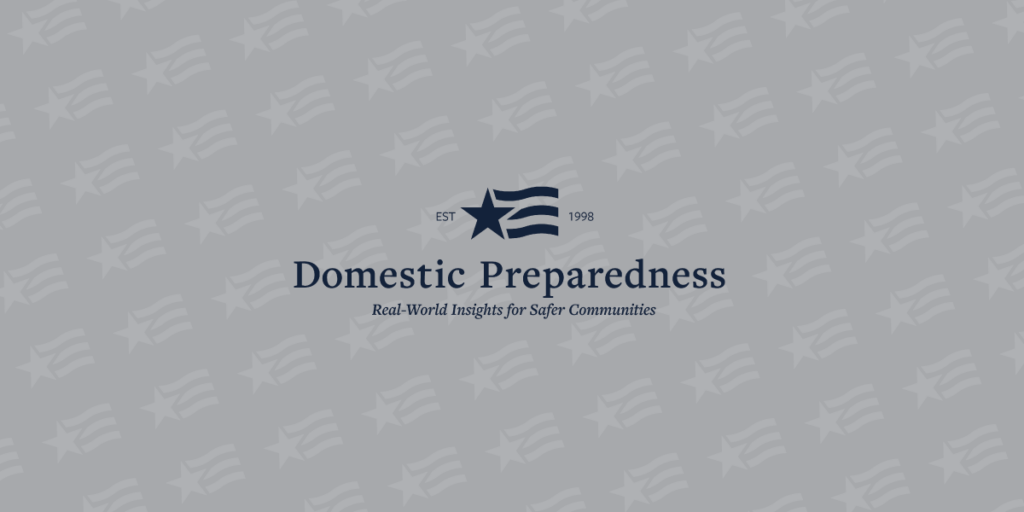
Embracing Resilience: At a Crossroad of Opportunity
March 2021 marked the 10th anniversary of the Great East Japan (Tohoku) Earthquake. On the afternoon of 11 March 2011, a magnitude 9.1 megathrust earthquake struck where the Pacific Plate subducts underneath the Honshu region of Japan. This was a massive event. The earthquake rupture lasted 150-160 seconds, with shaking in many communities felt for five or more minutes. The energy released by the earthquake could power the city of Los Angeles for more than a year. Japan was shifted 8 feet to the east and the earth’s axis shifted about 6.5 inches. The subsequent tsunami reached more than 10 meters in many places, devastating large portions of Japan’s eastern coast. The resulting destruction is estimated to have caused tens of billions of dollars in damage, destroyed tens of thousands of buildings, and caused the deaths of nearly 20,000 people.

The New World of Interoperability Communications
Four years ago, during the 2017 Inauguration, the country and the world existed in a very different reality than they do today. Today, a “new world” exists within a global pandemic and among First Amendment activities and protests. The 2021 Inauguration was unique for these reasons but also presented challenges in communications that are not so new. Now, more than ever, agencies need to collaborate to ensure continuity of government and security of the homeland as well as the health of the overall emergency communications ecosystem.
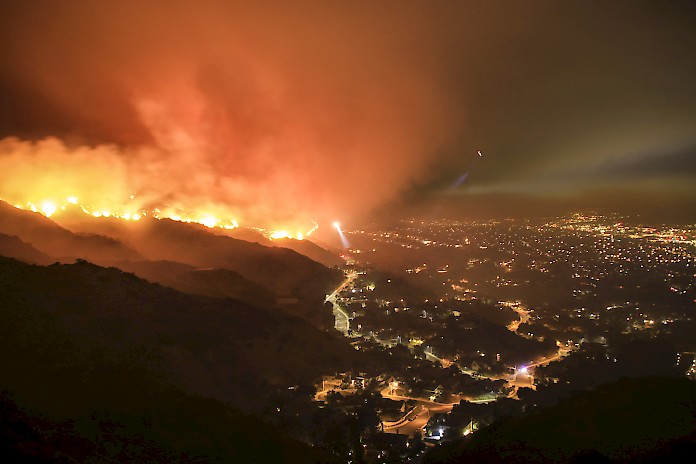
Mitigating Wildfires – Conceptualizing Possibilities
Mitigating wildfires is not only essential for protecting life, property, and critical infrastructure. It also is essential for controlling changes within the climate, which ultimately causes disasters around the world. National Fire Protection Agency (NFPA) estimates that wildfires now cost between $63 and $285 billion a year. According to data from the Fourth National Climate Assessment, wildfires cause 5-10% of annual global CO2 emissions each year. As long as wildfires continue to intensify and burn more area, CO2 emissions are expected to increase because changes in the climate lead to warmer temperatures and favorable wildfire conditions. Furthermore, an Environmental Protection Agency (EPA) report comprises the cost of health effects from exposure to U.S. wildfires between 2008 and 2017 as $450 billion.

Technical Assistance for Healthcare System Preparedness
The mission of the U.S.Department of Health and Human Services (HHS) Office of the Assistant Secretary for Preparedness and Response (ASPR) is to save lives and protect Americans from 21st century health security threats by leading the nation’s medical and public health preparedness for, response to, and recovery from disasters and public health emergencies. To accomplish this mission, ASPR collaborates with hospitals, healthcare coalitions, community stakeholders and groups, state, local, tribal, and territorial governments, the private sector, and other partners across the U.S. to improve readiness and response capabilities.
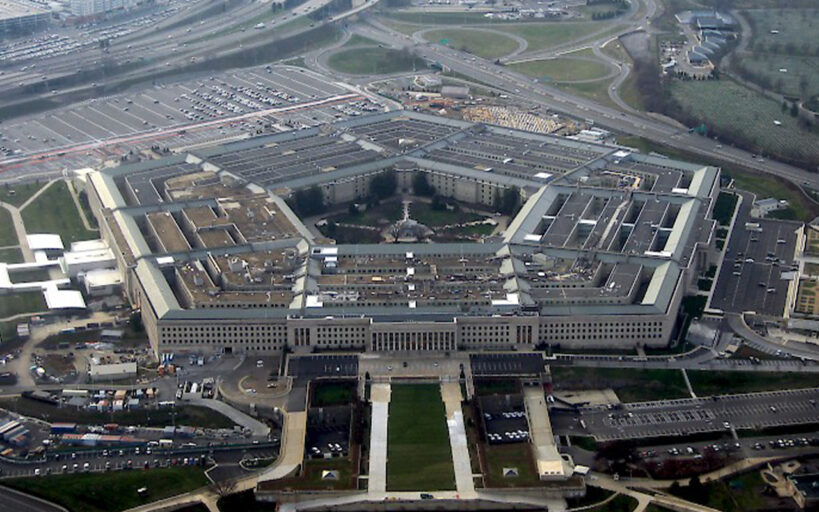
Building a Holistic Homeland Security Enterprise System
In the United States, a diverse group of agencies and organizations work together to accomplish the homeland security mission. Many of these organizations fall within the Department of Homeland Security (DHS). Organizations that are not directly a part of DHS act as partners and provide support in various ways. One of the most vital and most capable partners in the homeland security mission is the Department of Defense (DOD). The current organizational makeup of DHS is disorganized and confusing. As is, it prevents efficient support from its partners. The government should create a new, robust homeland security enterprise to solve these issues. By creating an updated homeland security enterprise and leaning on the DOD’s support, the nation will increase its security and protect its citizens.
Trending
 Bridging Communication Gaps: Lessons from Hurricane Helene by Greg Hauser Hurricanes in 2024 caused widespread damage to infrastructure, leading to a critical but often overlooked issue: isolation. Physical and technological…
Bridging Communication Gaps: Lessons from Hurricane Helene by Greg Hauser Hurricanes in 2024 caused widespread damage to infrastructure, leading to a critical but often overlooked issue: isolation. Physical and technological… A Systems Thinking Approach to Improving Emergency… by William Chapman “PACE” planning helps organizations fail gracefully, but systems thinking reduces the likelihood of failure altogether. Combining both approaches helps organizations…
A Systems Thinking Approach to Improving Emergency… by William Chapman “PACE” planning helps organizations fail gracefully, but systems thinking reduces the likelihood of failure altogether. Combining both approaches helps organizations… Disaster Stress Management in an Emergency Operations Center by Mary Schoenfeldt Disasters affect responders and community members, but they also bring trauma to those working inside emergency operations centers. Distance from…
Disaster Stress Management in an Emergency Operations Center by Mary Schoenfeldt Disasters affect responders and community members, but they also bring trauma to those working inside emergency operations centers. Distance from… Why Emergency Management Is a Good Career for… by Mathew Perrill For many service members, the transition from the military to a civilian workforce can be challenging. They have been trained…
Why Emergency Management Is a Good Career for… by Mathew Perrill For many service members, the transition from the military to a civilian workforce can be challenging. They have been trained…Trending
 Disaster Stress Management in an Emergency Operations Center by Mary Schoenfeldt Disasters affect responders and community members, but they also bring trauma to those working inside emergency operations centers. Distance from…
Disaster Stress Management in an Emergency Operations Center by Mary Schoenfeldt Disasters affect responders and community members, but they also bring trauma to those working inside emergency operations centers. Distance from… Why Emergency Management Is a Good Career for… by Mathew Perrill For many service members, the transition from the military to a civilian workforce can be challenging. They have been trained…
Why Emergency Management Is a Good Career for… by Mathew Perrill For many service members, the transition from the military to a civilian workforce can be challenging. They have been trained… Bridging Communication Gaps: Lessons from Hurricane Helene by Greg Hauser Hurricanes in 2024 caused widespread damage to infrastructure, leading to a critical but often overlooked issue: isolation. Physical and technological…
Bridging Communication Gaps: Lessons from Hurricane Helene by Greg Hauser Hurricanes in 2024 caused widespread damage to infrastructure, leading to a critical but often overlooked issue: isolation. Physical and technological… A Systems Thinking Approach to Improving Emergency… by William Chapman “PACE” planning helps organizations fail gracefully, but systems thinking reduces the likelihood of failure altogether. Combining both approaches helps organizations…
A Systems Thinking Approach to Improving Emergency… by William Chapman “PACE” planning helps organizations fail gracefully, but systems thinking reduces the likelihood of failure altogether. Combining both approaches helps organizations…Trending
Bridging Communication Gaps: Lessons from Hurricane Helene by Greg Hauser Hurricanes in 2024 caused widespread damage to infrastructure, leading to a critical but often overlooked issue: isolation. Physical and technological…
A Systems Thinking Approach to Improving Emergency… by William Chapman “PACE” planning helps organizations fail gracefully, but systems thinking reduces the likelihood of failure altogether. Combining both approaches helps organizations…
Disaster Stress Management in an Emergency Operations Center by Mary Schoenfeldt Disasters affect responders and community members, but they also bring trauma to those working inside emergency operations centers. Distance from…
Why Emergency Management Is a Good Career for… by Mathew Perrill For many service members, the transition from the military to a civilian workforce can be challenging. They have been trained…
Domestic Preparedness Journal
Featured in this issue
- Special Units and Underutilized Resources
- Law Enforcement and Multidisciplinary Teams
- Public Order Policing Units in Disasters
- State Defense Forces in Emergency Response
- Emergency Carcass Operations
- Wildfire PREsponse: Closing the Gap With Mitigation
- Scouts and the Value of Prepared Youth
- Service Dogs: What First Responders Need to Know
- Emergency Management for Transitioning Veterans
- Podcast – Reframing Hurricane Response: Craig Fugate on Survivors as a First Line of Defense
- Podcast – Built to Serve: Chief Jeffrey J. Wittig on TIFMAS, Teamwork, and Emergency Response
Articles Out Loud

Article Out Loud – Law Enforcement Collaboration Within Multidisciplinary Teams
June 25, 2025
This is an article by Richard Schoeberl and Anthony (Tony) Mottola, an Article Out Loud from Domestic Preparedness, June 25,

Article Out Loud – State Defense Forces: The Untapped Backbone of Emergency Response
June 25, 2025
This is an article by Robert Hastings, an Article Out Loud from Domestic Preparedness, June 25, 2025. As disasters become

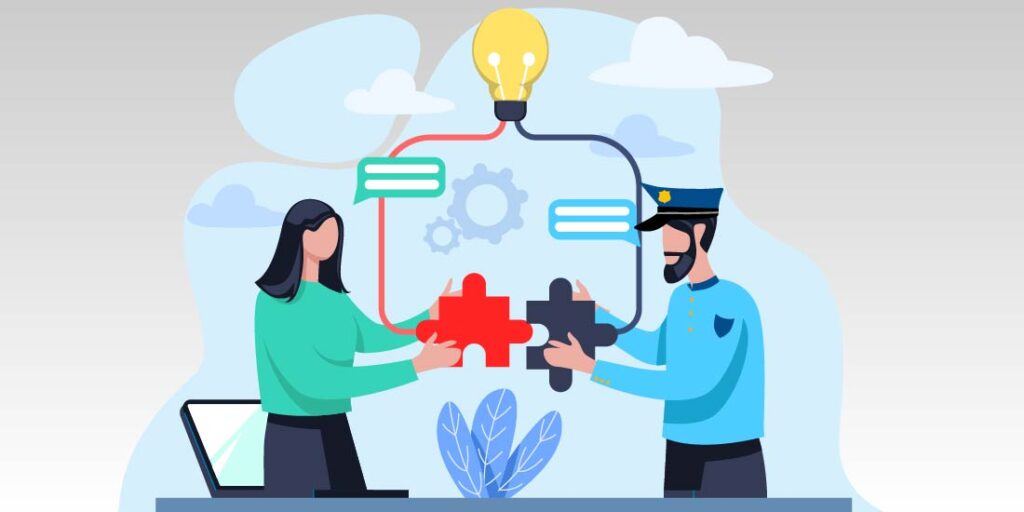
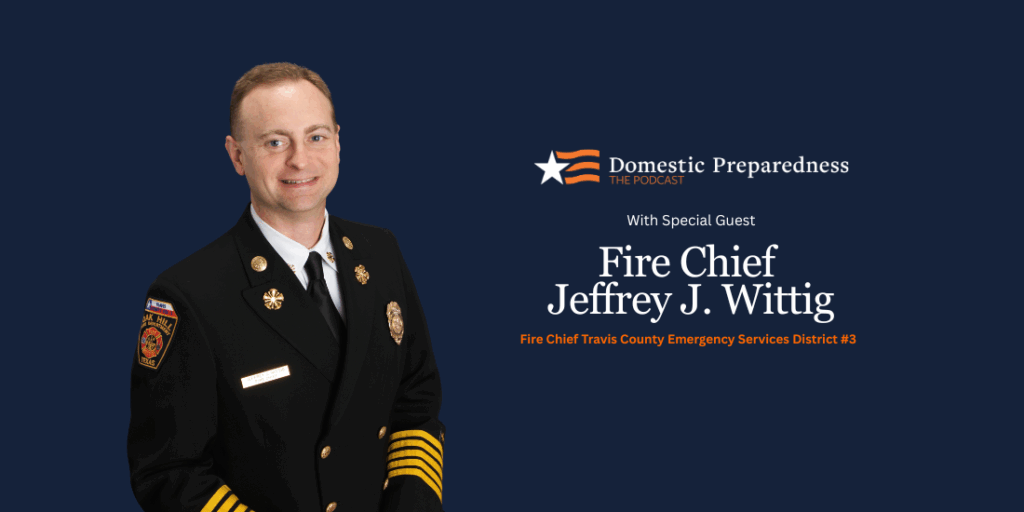
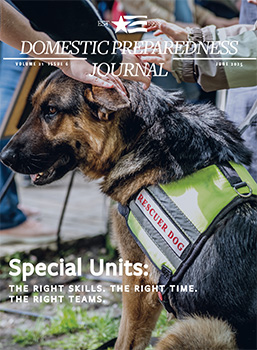

Editor’s Note – Special Units and Underutilized Resources